Main Menu

The Original Infanterie-Regiment Nr. 63
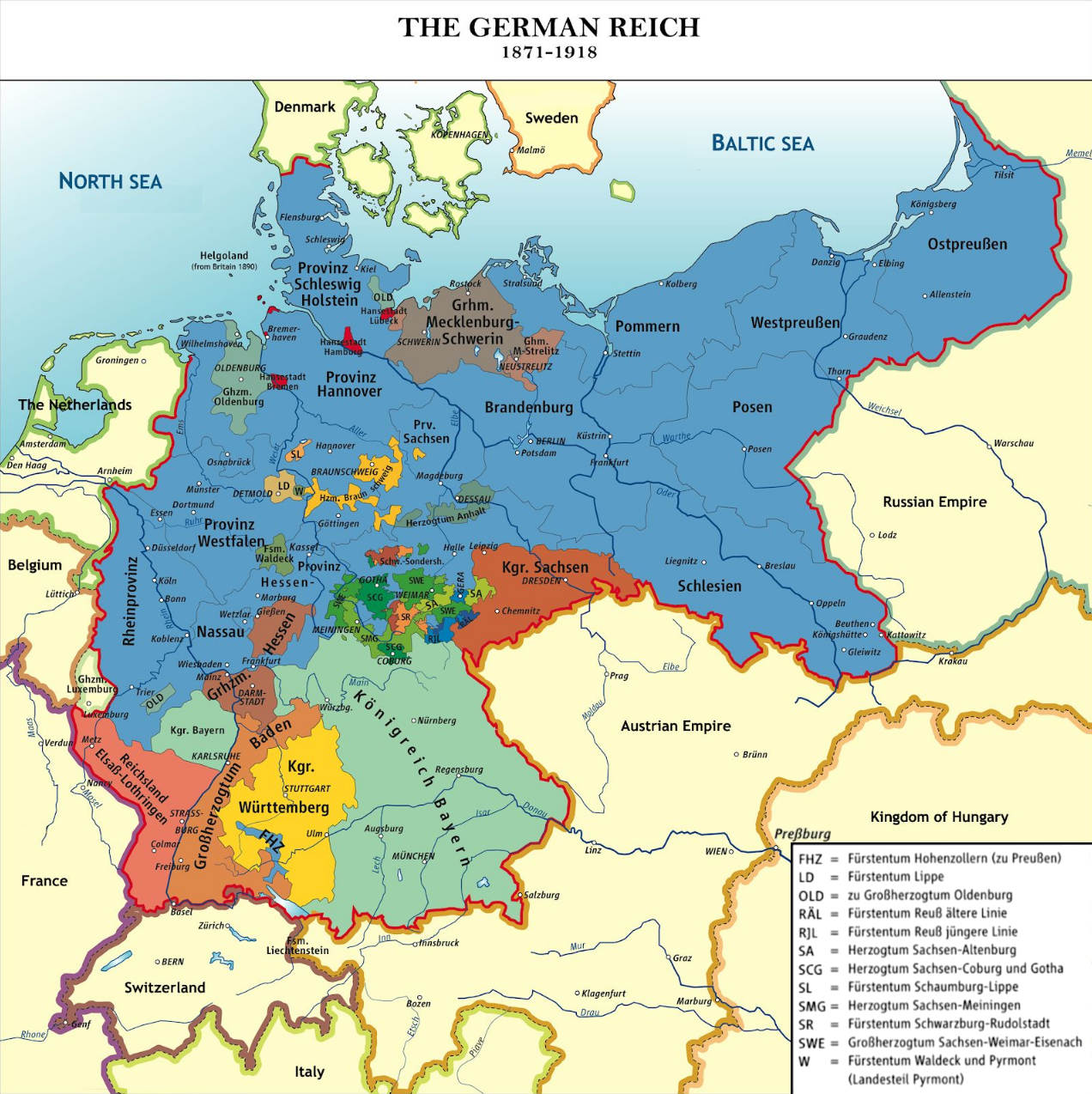
A Brief Background of IR63
In the mid nineteenth century Germany was a collection of smaller states that were linked as a German Confederation. Following the Franco-Prussian War of 1870, a wave of Germanic Nationalism swept through the whole of the German Confederation. Prussia was able to persuade her partners within the confederation that unification was desirable. As a result, Wilhelm of Prussia was proclaimed Emperor of Germany on January 18th 1871 and The Second German Reich was born.
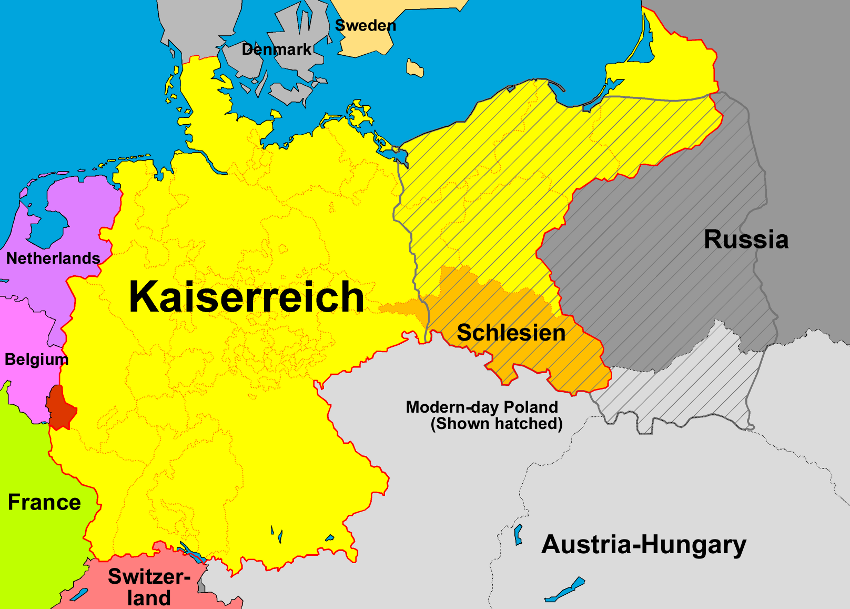
Silesia (Schlesien in German) was an area that stretched along the 220 mile Oder River valley and had been part of Prussia since the 1740s. It was divided into two sections: the northwestern part known as Lower Silesia and the southwestern part known as Oberschlesien (Upper Silesia). The latter area was the home of IR63.
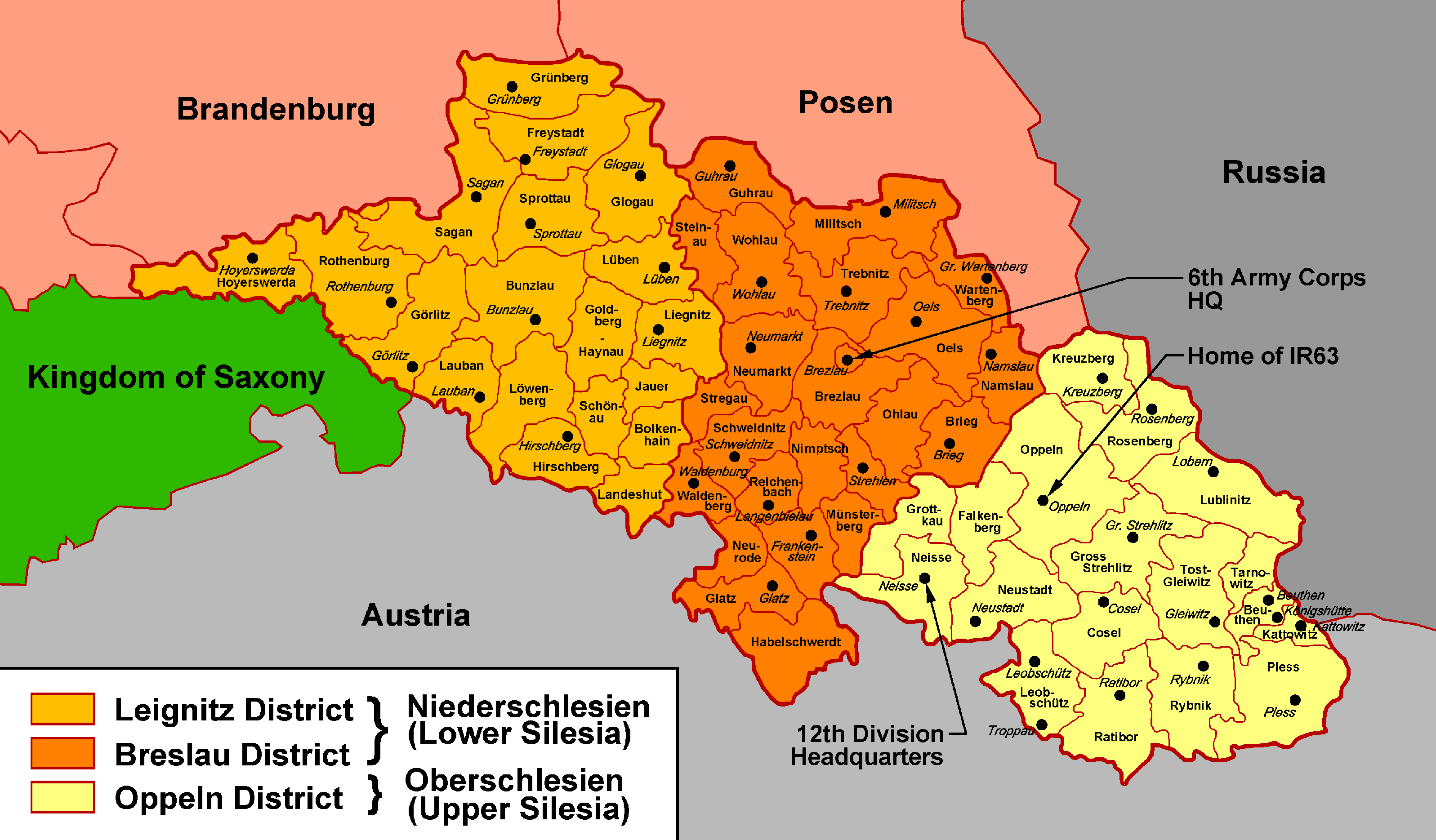
This unit was number 63 in the Prussian line, formed in 1860, but was also part of (and referred to as) the "4. Oberschlesisches" (4th Upper Silesian). The 4. Oberschlesisches consisted of JR63 and JR157. On the eve of the war, JR63 and JR157 constituted the 78th Brigade. This brigade, along with JR23, JR62, Jäger zuPferde (mounted rifles) Regt. Nr. 11, Feldartillerieregiment Nr. 21 and Feldartillerie-Regiment Nr. 57, made up the 12th Division. The 12th Division was based at Neiße. The 12th and 11th Divisions formed the 6th Army Corps, which in peacetime was based at Breslau (now called Wroclaw), the largest city in the province. Though actually in Lower Silesia, Breslau was roughly in the middle of Silesia, thereby providing a centralized location from which to administer the two divisions. In August 1914, the 6th Army Corps was an element of the 5th Army under command of Krönprinz Friedrich Wilhelm.
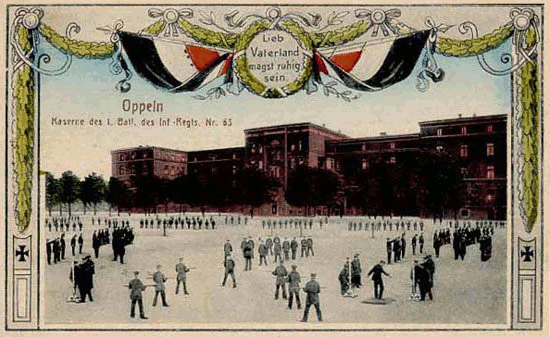
JR63's home station was in the vicinity of the towns of Oppeln and Lublinitz in Oberschlesien (now a part of southwestern Poland). This area was a great mining and industrial center: the mines produced much of Germany's coal, zinc, and lead, and large steelworks operated in many cities, including Lublinitz. The factory towns of Niederschliesien (Lower Silesia), particularly Breslau, turned out trucks, motors, leather items, and metalwork. Silesia's farms grew much more produce - barley, rye, wheat, oats, vegetables, fruit and potatoes, even tobacco - than the province's residents needed. Goods from the area were transported to other markets on the well-developed German railway network and the Oder River, which ran the length of the province. In addition to fields and orchards, a large percentage of the land - at least 25% - was still heavy forest - a good place to hunt and a source of timber.
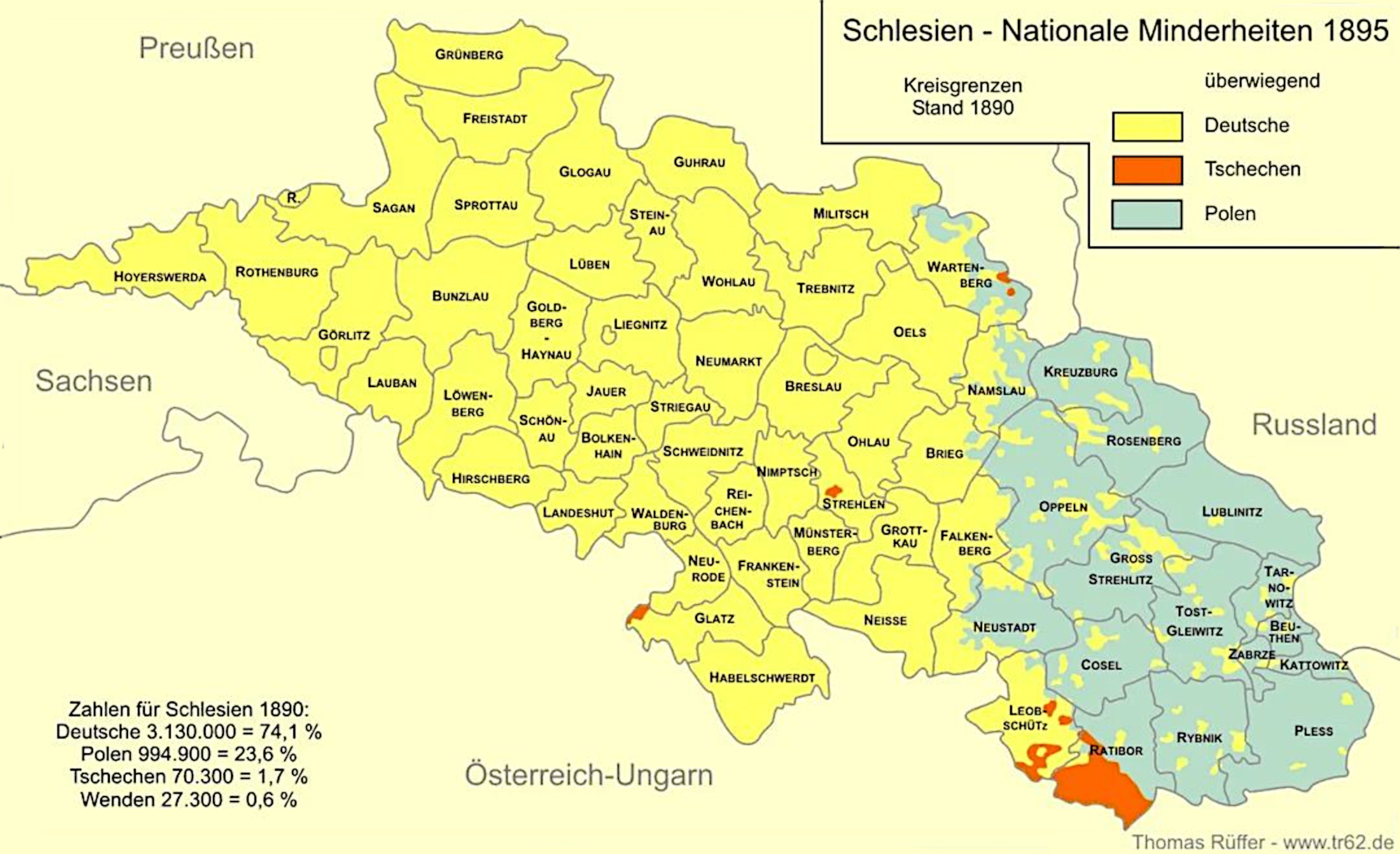
The above map from 1890
shows the ethnic makeup of Selesia at that time. Almost the entire region of
Oberschlesien (of which IR63 members were from) is almost entirely Polish.
Although Silesia was a province in the state of Prussia (hence the Prussian colors - black, white, black - on the state cockades of JR63's caps and spiked helmets), the people of the area had a distinctive character that set them apart from other Prussians. Many were of Polish and mixed Polish-German descent. A large part of the population was Roman Catholic or Jewish, which differed from the predominantly Protestant population in other parts of Prussia. Princess Evelyn, the English wife of Prince Blucher, spent time both in Berlin and on the Blucher estate in Silesia during the war. In her memoirs, An English Wife in Berlin, she compared the common citizens of Prussia Proper and Silesia. She said she preferred the Silesians, characterizing them as a self-reliant, good-natured people, and as being friendlier than the Berliners. Even in the times of great adversity that came during the war, she reported that the average Silesian was willing to share what little he had with his neighbors. Despite the fact that almost every household had lost family members in combat by 1917, the people generally remained steadfast in their sense of duty, and were as cheerful as possible under the circumstances.
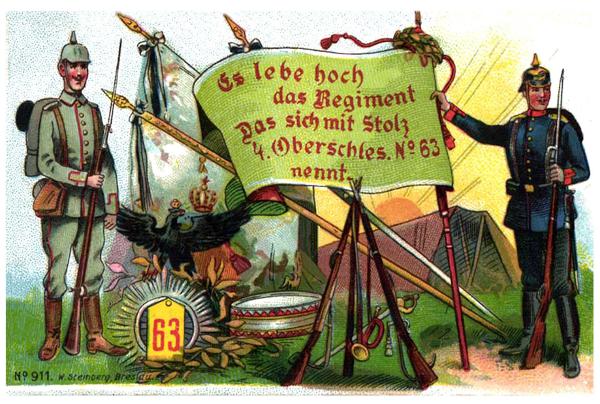
Viewpoint
Rick Baumgartner, a former member of JR63, met and talked with a man who provided another viewpoint on the Silesians. He located and interviewed a German veteran from a Bavarian artillery regiment that had been stationed next to JR63 at one point during the war. He said that they all liked the Silesians, whom he described as big, friendly, good-natured miners and farmers. But he felt sorry for them, as they were so easy-going and good-natured that Bavarian artillerymen were able to play some truly awful practical jokes on them. In spite of such relatively un-warlike traits, early in the war the Silesians were among the best troops in the German Army.
The 12. Infanterie-Division at War
1914
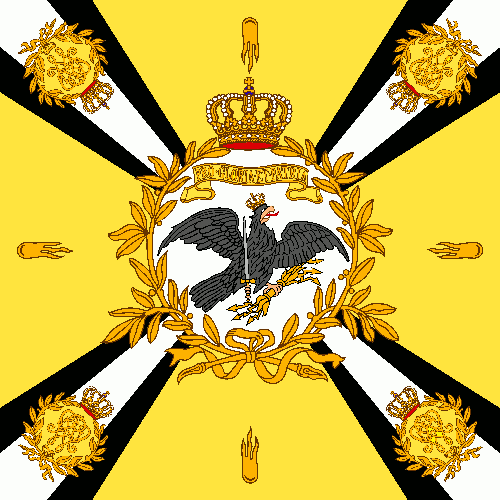
Above: IR63's Regimental Standard
France
JR63 was part of the 12th Division, which also included JR23 and JR62. The 12th Division, along with the 11th Division, was part of the 6th Army Corps (Breslau) and formed a part of the 5th Army (German Crown Prince) at the beginning of the war.
The 12th Division saw its first action in the battle of August 22, 1914 at Rossignol les Bulles and entered France August 24, passed the Meuse above Mouzon on August 28, and took part in the battle September 7 at Laheycourt and Villotte near Louppy.
Champagne
After the battle of the Marne, September 21, the 12th Division - with JR63 as one-quarter of its infantry strength - went into combat at Berru and at Nogent L'Abbesse (east of Rheims) in the Champagne region.
In April 1915, the infantry strength of the 12th Division was affected by the German General Staff's efforts to create more divisions, when IR157 was transferred to the newly formed 117th Division. At that point, the 12th Division had only one brigade, as JR63 was included in the 24th Infantry Brigade with JR23 and JR62. The 12th Division remained on the Rheims front until mid-June 1915 when it was shifted to the Artois sector.
1915
Artois
In April 1915, the infantry strength of the 12th Division was affected by the German General Staff's efforts to create more divisions, when IR157 was transferred to the newly formed 117th Division. At that point, the 12th Division had only one brigade, as JR63 was included in the 24th Infantry Brigade with JR23 and JR62. The 12th Division remained on the Rheims front until mid-June 1915 when it was relieved on the Rheims front and transferred to Artois. The 12th Division then occupied a sector to the south of Souchez where it took part in some very heavy engagements (1st to the 16th of July). The Division was relieved toward the end of September.
After a rather short rest period in the region of Cambrai, the division took its position in the sector which crosses the Somme (during the first half of October).
1916
The Somme
In October of 1915, the 12th Division , including JR63, moved to the Somme. On July 1, 1916, the 12th Division took the brunt of an attack by a large part of the British 4th Army north of the Somme (sectors Contalmaison-Hardecourt). In just one day of defensive action, the division suffered severe losses amounting to just over 60% of its effectives. The 12th Division was relieved on July 12th and reorganized in the vicinity of Cambrai.
On the 20th of July, the First and Second Battalions of JR63 took part in counterattacks against British positions just northeast of Poziéres. The Second Battalion attacked through the ruins of the village of Courcelette, while the First Battalion moved along its right flank near Martinpuich. Both took heavy losses. About the 9th of August the 12th Division was relieved, and on the 21st went into the sector of Monchy aux Bois (south of Arras), which it held until October 16.
Ancre
The entire 12th Division again suffered heavily in a bloody fight on November 14, 1916, when it defended a line north of the Ancre River near Beaumont-Hamel against another British Attack. On December 12 the Division was transferred to Champagne and took over the sector of Prunay.
Russia
On December 28, the Division departed from Champagne at Warmeriville for the Russian front by the route Aix la Chapelle-Cologne-Hanover-Luneburg-Hamburg-Stettin-Königsberg-Tilsit-Chavli-Ponieviej. It detrained southwest of Illuxt on January 2, 1917.
1917
On the Russian front the 12th Division was stationed in a sector in the region of Dwinsk and did not take part in any important battles.
France
Relieved about the end of May, 1917, it returned to the Western Front. Itinerary: Jelowka (May 27) Insterburg-Posen-Leipzig-Weimar-Cologne-Saarbrucken. Detrained at Metz June 3 and reentrained on the 9th at Ars sur Moselle for Mouscron, by way of Metz-Luxemburg-Namur-Tournai, and detrained at Gheluwe.
It remained in reserve first on the Wytschaete-Messines front, and then (Aug. 1) relieved the 22d Reserve Division in the sector east of Klein-Zillebeke after the Franco-British attack. In this sector the division did not engage in battle but suffered greatly from artillery bombardments.
Italy
It was relieved on August 20 and transferred to Alsace for reorganization and rest. It remained in the region west of Bâle until the end of September. It was then sent to the Italian front, to the 14th German Army, where it was engaged in the Tolmino sector on October 25, and relieved on the Piave about the 8th of December.
Tolmino offensive
The troops of the 12th Division had a key role in the German-Austrian joint operation known as the Tolmino offensive, which took place in October 1917. The 12th and 117th Divisions, along with the Alpine Corps (which included a company of Württemberg mountain troops commanded by one Erwin Rommel) formed an assault force referred to as the "Stein Group."
This force was assigned the task of executing the main attack intended to roll up three entrenched Italian positions. The 12th Division's assignment was to break through to the town of Karfreit by moving along both sides of the Isonzo Valley. With the aid of fog and rainy weather, the 12th Division's three infantry regiments all made excellent progress against the Italians. By October 25, they had passed their original goals and were into the Natisone Valley.
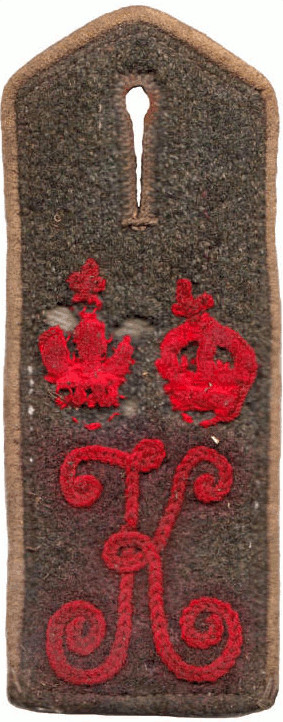
Caporetto, Mount Matajur and Honors for JR63
On October 25-26, 1917, elements of JR63, JR23 and the Württemberg Mountain Battalion attacked and captured critical Italian positions on Mount Della Colonna and Mount Matajur. The fall of these commanding positions made it possible for the combined German and Austrian forces to inflict a decisive defeat on the Italians later that same month in what was known as the 12th Battle of the Isonzo, or the Battle of Caporetto.
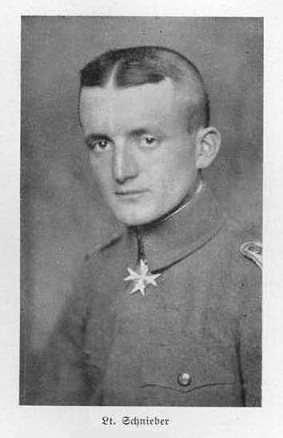 On November 3, 1917 Kaiser Wilhelm decreed that Kaiser Karl would become the ceremonial
regimental chief of certain units that had distinguished themselves in the cooperative
actions with Austria. This decree was made official as Army order 1080 of
November 10, 1917, which bestowed the honor upon Garde Grenadier Regt. Nr. 2, the
2nd Westfalischen Husaren Regt. Nr. 11, and the 4th Oberschlesischen
Infanterie-regiment Nr. 63. The latter two units received the boards with the royal
cipher of Kaiser Karl - a double-crowned "K".
On November 3, 1917 Kaiser Wilhelm decreed that Kaiser Karl would become the ceremonial
regimental chief of certain units that had distinguished themselves in the cooperative
actions with Austria. This decree was made official as Army order 1080 of
November 10, 1917, which bestowed the honor upon Garde Grenadier Regt. Nr. 2, the
2nd Westfalischen Husaren Regt. Nr. 11, and the 4th Oberschlesischen
Infanterie-regiment Nr. 63. The latter two units received the boards with the royal
cipher of Kaiser Karl - a double-crowned "K".
Leutnant Schnieber, an officer from 4./JR63, and Rommel both received the "Pour Le Mérite" for their roles in the assault on the mountain-top defenses. And, in recognition of its part in the Caporetto offensive, the entire JR63 was awarded a distinction shared by only one other regiment in the German Army - shoulder boards with the royal cipher of the Austrian Kaiser, Karl.
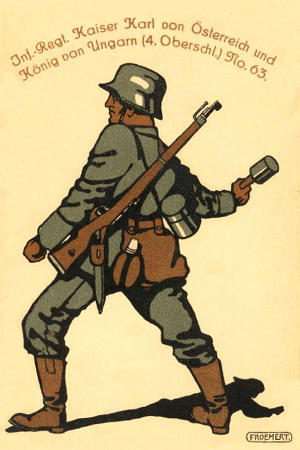 In conjunction with this new ciphered shoulder board replacing the old version with the
numeral "63", the unit was renamed "Infanterieregiment Kaiser Karl von Österreich
und König von Ungarn (4. Oberschlesisches) Nr. 63".
In conjunction with this new ciphered shoulder board replacing the old version with the
numeral "63", the unit was renamed "Infanterieregiment Kaiser Karl von Österreich
und König von Ungarn (4. Oberschlesisches) Nr. 63".
France
The 12th Division was brought back from Italy to the French front about December 25. At the beginning of January, 1918, it was in the neighborhood of Zabern.
Recruiting
The 12th Division is recruited from Upper Silesia, a great mining and industrial center, which suffices to insure its own full recruiting and even helps out other districts less populated or temporarily below strength. The sending of these men out-side of the district has the advantage of reducing, in its own regiments, the Polish element, which dominates in Upper Silesia.
On December 8, 1917, the 12th Division was relieved at a position on the Piave River and by Christmas it was back on the Western Front. Once again, in February 1918, the Division was given a rest period in Elsaß. But three days before the great March offensive, it was moved to the Douai sector.
Value-1917 Estimate
The 12th Division fought well at the Somme. It appears to have been reorganized during its stay at Zabern (January, 1918). It has always been considered a good division.
1918
Lorraine
On January 24 the 12th division entered the Domevre sector, relieving the 233rd Division. It was relieved on February 20 and went to rest and train in Alsace. On March 18 it entrained at Froeschweiler and moved to Ath, from where it marched to the Gory-Belloune area, south of Douai (a march of 40 miles).
Battle of Picardy
On the 23rd the division moved to Drury and up the Cambrai-Arras road to Vis en Artois, coming into line on the night of March 23-24. It attacked on the 24th, but was held up by the British artillery fire. It remained in line until April 1, making little progress in spite of heavy and costly fighting.
Meteren
The division was engaged south of Meteren on the night of July 19-20; here it remained until August 28. In a local operation on August 18 the division lost 300 prisoners, otherwise the sector was quiet.
Vis en Artois
The 12th Division marched up the Cambrai Arras road to Vis en Artois on March 23, 1918, and went into the line on the night of March 23-24. IR63 was part of an attack on the British defenses the next morning, but the assault was held up by intense artillery fire. The Division, including IR63, remained in the line until April 1, 1918, while making little progress and suffering significant casualties.
In mid-May, the 12th Division was engaged in more heavy fighting south of Arras, along the Lys River. For his leadership of the Division in three engagements, the 12th Division's commander, General Lequis, was awarded the "Pour Le Merit".
Battle of the Lys
The division rested in the suburbs of Douai until mid-April. It was engaged northeast of Merris on the 17th. It appears to have received replacements in the interim. The division passed into the second line on May 18, after suffering especially heavy losses. In recognition of the service of the 12th Division, south of Arras and in the Lys battle, Gen. Lequis, the division commander, received the Order of Merit in May.
The division was at rest near Renaix (Belgium) from May 29 to July 12. It entrained at Audenarde on the 12th and moved to Perenchies (via Coutrai and Lille).
From mid-July to late August 1918, the Division was almost constantly involved in hard defensive fighting, principally in the area around Armentieres. On August 28, it entrained near Armentieres and went to a point north of Douai (Le Forest).
Battle of Cameral
It was engaged southeast of Morchies on September 3, and in the days following was driven back on Inchy en Artois, Marquion (3rd to 13th). By the end of September it had passed Bourlon, Epinoy, Aubencheul au Bac, and Fressies. The division was relieved about October 6. The division lost more than 1,100 prisoners.
The Division again engaged the enemy southeast of Monchies on September 3, and in the next 10 days, was driven back towards Inchy en Artois. By the end of September 1918, the 12th Division had been pushed back past Boulon, Epinoy, Aubenchel au Bac, and Fressies. By the time the Division was relieved on October 6, 1918, its casualties included the loss of more than 1,100 prisoners.
The 12th Division was reengaged on October 11 southeast of Armentieres. In a fighting retreat, it passed Lille, east of Tourcoing, on October 20, and stopped at Helchin, where it was again relieved on October 25. The German Army's desperate straits at this point were reflected in that even after all the battering it had taken, on November 3 the 12th Division was again put into the line, east of Joulain, where it remained until the Armistice.
Value-1918 Estimate
The division was rated as a second-class division. It was actively engaged in the spring offensives and did well. After the middle of July it was almost constantly engaged in hard defensive fighting.
After the Armistice
After the armistice, the 12th Division was eventually moved back to Silesia. Following demobilization, many former 12th Division members were involved in Freikorps activity and the fighting along the Polish Border. Apparently some ex-12th Division soldiers also served with Polish forces fighting the Bolshevik Russians.
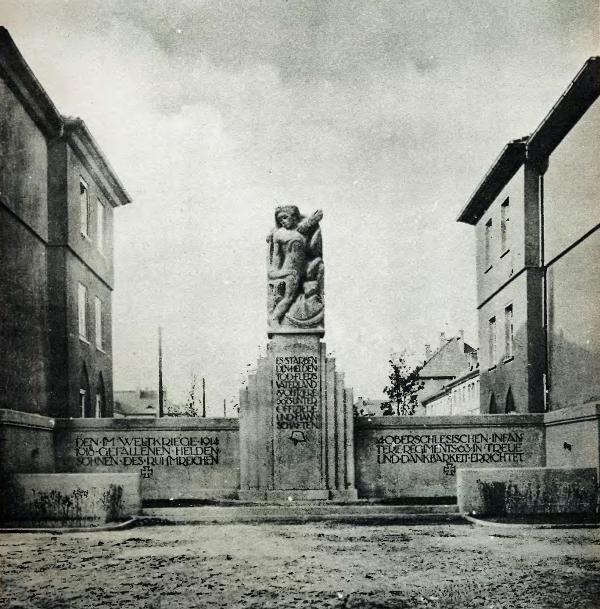
Above: Memorial erected in Oppeln to the fallen from IR63 in the war.
IR63 Artifacts
Today, artifacts of IR63 are not particularly common. Most items that can be identified as coming from JR63 seem to come out of Canada, suggesting that at some point in the war - probably in 1916 - JR63 was hit hard by Canadian troops. There is no indication that the unit did any significant fighting against American forces.
To see images and artifacts from the original IR63 Click Here.
Sources
The Division's record of service during the war can be used to trace the engagements which JR63 was involved and where it was stationed. There are two regimental histories of JR63, but as of yet neither has been translated into English, the histories are:
Kriegsgeschichte des Kgl. Pr. Infanterie-Regiment Nr. 63 (1914-1918) by A. Schubert, Oppeln 1926. On the other hand, German divisional histories, are available in English. Those sources make it clear that the 12th Division - and therefore JR63 - was actively engaged from the first months of the war right up through the Armistice.
Das Königliche preußiche Infanterie-Regiment Nr. 63 (4. Oberschlesisches) by Franz Kaiser, Berlin 1940.
Histories of the Two-hundred and Fifty-one Divisions of the German Army Which Participated in the War (1914-1918) by United States. Army, American Expeditionary Forces General Staff, G-2, Chaumont, France, 1920.